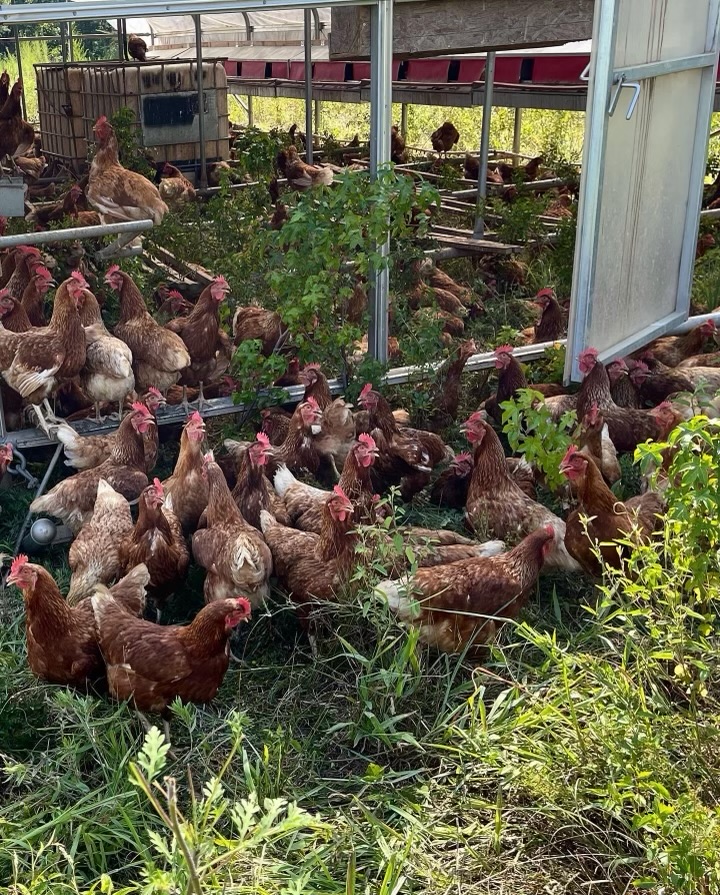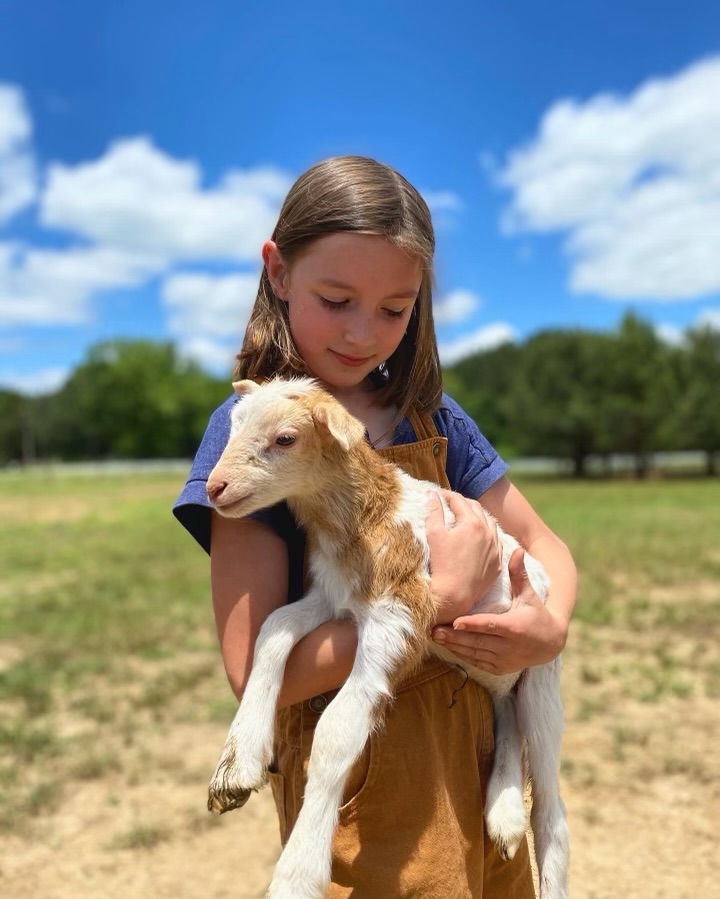For the Price of Eggs
April 6, 2023An Interview with Beniaih Riley of Etta Hills Farm
Everyone has been talking about the price of eggs. While supermarket prices for good quality eggs from pasture-raised chickens has jumped north of $12 a dozen in recent weeks, you may have noticed that the local farm eggs we sell at Chicory Market have stayed steady at $5.99. That’s because Etta Hills Farm and other small egg farmers we work with raise chickens the way nature intended — by letting their birds roam on the emerald green pastures of North Mississippi, growing fat on seeds, worms, grubs, and other living things while replenishing the land we call home.
These practices, while more labor intensive, can insulate small farmers from the market forces impacting commodity feeds and other inputs. The result is an egg that packs in more vitamin D, omega-3 fatty acids, and other nutrients. Most importantly, local eggs taste better!
Chicory Market’s John Martin sat down with Beniaih Riley of Etta Hills Farm to talk about some of the challenges of raising chickens using regenerative practices.
John Martin: Start by telling us a little history about the farm. What year did you guys start? How did you get into farming? What got your family interested in regenerative agricultural practices?
Beniaiah Riley: Our family has been blessed to farm in North Mississippi for over 60 years. A long-term fixture of Hernando Farmers Market, we started by offering delicious sweet corn, peas, and more grown on our farm in Eudora, MS.
In 2021, Riley Family Farms partnered with Allen Williams and Understanding Ag to practice Regenerative Farming at Etta Hills Farm, located 15 minutes east of Oxford. We set out to transform hundreds of acres of degraded soil on the edge of Holly Springs National Forest using traditional, natural, wholistic agricultural practices. Now, we are proud that this land produces healthy, delicious grass-fed beef and lamb, pasture-raised eggs and chickens and heritage, pasture-raised pork.
JM: Compared to operations that rely on commodity feed sources, are your costs indeed more stable, or are you having to absorb costs while trying to keep wholesale/retail prices stable?
BR: I would say it’s a combination of both. Feed costs have risen for us, but not quite as sharply as commodity GMO grain, corn, and soy-based feeds. And since national brands and CAFOs (factory-scale farms categorized by the USDA as “concentrated animal feeding operations”) consume millions of tons of feed a day, even an increase of a few cents per pound equates to huge costs for that type of operation.
JM: What practices are involved in producing eggs on a regenerative farm? Where do these practices add cost, and where do they insulate your costs compared to national market forces?
BR: Our pastured laying hens have probably the most vital impact on our land of all our species right now. Each hen drops around a pound of manure throughout a week, adding immense fertility, and their scratching and packing helps disrupt the surface of the soil to encourage better rainfall penetration. All of this stimulates a ton of soil building biological activity. Spreading the benefits of this process and avoiding too much impact on one area means a labor intensive process of moving our chicken house and thousands of feet of protective electric fencing to new pasture several times a week. However, it also saves us money on feed as our omnivorous hens supplement their diet with a constantly renewing supply of fresh forage, insects, even small reptiles.
JM: Your eggs have really rich, colorful, flavorful yolks. We love them! What goes into them to give them that texture and color?
BR: The color of egg yolks is 100% the product of their feeding. Mass produced eggs in CAFOs get all of their diet from grain based feed, so their yolks are pale. Our chickens benefit from a diverse diet of forage, non-GMO corn supplements, and culled Mississippi sweet potatoes. The same thing, along with the active lifestyle and sunlight exposure our chickens enjoy, is responsible for their thick, multi colored shells.
JM: Lastly, what are your long-term goals for the farm in terms of its practices and production?
BR: Long term, we would like to show that regenerative ag works on any piece of land and help other small farmers replicate our processes. In the near term, we have a lot to be excited about. We just recently completed construction on our full service poultry processing plant in Holly Springs, and we’ll soon be one of the only local farms in North Mississippi to offer pastured chicken, duck, and turkey. We’ll also be able to offer processing services to other small farms.
—





